How to Build a Content Publishing Workflow

Publishing high-quality content takes more than writing. You need a clear system that connects every step of your content workflow and keeps multiple people on track.
A defined publishing workflow adds structure, reduces missed deadlines, and helps your team move from content ideation to publication with confidence. With a content calendar, you keep everyone aligned and aware of what’s next.
In this article, you’ll learn how to create a smooth content publishing process using content workflow management tools.
What Is a Content Publishing Workflow?
A content publishing workflow is a step-by-step system that takes content from an idea to publication and promotion. It gives structure to the content production process, so that you stay organized, meet deadlines, and maintain consistency across every channel.
There are two common types:
- A task-based workflow breaks a project into clear steps, each with a specific owner and due date.
- A status-based workflow tracks progress stages like “In Review” or “Published.”
An effective workflow improves collaboration between all relevant team members, saves time by reducing repetitive tasks, and supports quality at scale. It also helps track progress and standardize work across large teams.
You can manage this through tools like WordPress or Webflow for your content management system (CMS), or Trello and Asana as your project management tool.
For full automation, content workflow automation platforms such as Activepieces connect your tools and make your content operations run smoothly.
Different Workflow Types by Content
Each type of content follows a different set of steps, so you need separate workflows that match your content marketing strategy.
Blog Article Workflow
A blog article workflow gives your team a steady path for written work. You begin by sorting your content ideas and checking keyword research to find the strongest topic. A brief comes next and sets the plan for the writer.
Writers handle the first draft, then editors shape the text and confirm it follows brand guidelines. A content manager prepares the CMS version and builds a clean web page layout.
Key parts include:
- Idea selection
- Writer assignment
- Draft review
- Visual setup
- Metadata checks
The final version feeds into your content marketing workflow so your marketing team knows when to promote it.
Social Media Workflow
A social media workflow gives your team a simple way to handle fast work across several platforms. You start by choosing the theme for the post and matching it to the right channel. Some days you pull from a blog post, and other days you build from a trend.
Useful steps include:
- Idea planning
- Content creation
- Quality control
- Scheduling
- Live checks
After the post publishes, you track engagement and use that data to guide the next round.
Long-Form Content Workflow
A long-form content workflow supports work that covers a deeper topic. You use it for guides, eBooks, and reports that need more time and stronger research.
Common steps include:
- Goal setting
- Outline development
- Deep research
- Full draft
- Review
- Design
- Release
Once the file is ready, the project joins your content marketing workflow so the marketing team can promote it.
Video Production Workflow
A video production workflow helps your team handle work that has several moving parts. You begin by defining the point of the video, the audience, and the channel where you plan to publish it. A script comes next, along with a basic layout of the important shots.
Main steps include:
- Concept planning
- Script writing
- Shoot setup
- Capture
- Edit
- Review
- Release
Your team reviews the finished file and adds the upload date to the editorial calendars to keep everything organized.
How to Build a Content Publishing Workflow: A Step-By-Step Guide
Let’s go through the exact steps to design a workflow for your content creation process that fits your team’s goals.
1. Audit and Visualize Your Current Process
Before improving your content publishing workflow, start by understanding how your current system works. It’ll help you uncover delays, repetitive tasks, and unnecessary steps that slow your content efforts.
Begin by mapping every step of your task-based workflow, from ideation to publication. You can sketch it on paper or use a project management tool to visualize it. Include how blog posts, videos, and social media posts progress through your pipeline.
Ask questions like:
- Where do ideas start?
- Who drafts and edits?
- How long does each stage take?
- Which parts require manual uploads or reviews?
Once you’ve documented the full process, look for common problems such as slow approvals, disorganized feedback, or manual uploads to your content management system. These bottlenecks often waste time and block progress.
Finally, turn your notes into a simple diagram. A visual map builds alignment across all team members and lays the foundation for a smoother content workflow.
2. Define Each Workflow Stage With Clear Criteria
Defining every phase makes it easier to manage content efficiently and keep projects moving forward without confusion. Using an editorial calendar helps you see each stage in sequence and track progress.
Now, let’s go over each stage of the content publishing workflow and how to set specific standards for your team to follow.
Ideation and Research
In the ideation and research stage, your content marketing team shapes ideas into plans. Every piece of high-quality content begins here. You gather, refine, and organize content ideas that support your business goals and connect with readers.
Brainstorm as a group. Pull insights from sales calls, customer support tickets, or online forums to uncover common questions and themes. Explore what your competitors publish and find ways to go deeper or cover topics from a new angle.
After building a list of ideas, move into validation. Collect feedback through polls, analytics, or engagement data to confirm what your audience wants.
With this foundation, you’re creating content that matters to your readers and fits seamlessly into your content strategy.
SEO and Keyword Planning
Every content publishing workflow relies on a clear SEO and keyword planning phase.
At this point, your team identifies your target audience, maps their search intent, and finds keywords that connect with real needs. Keyword research guides your content planning to make sure each piece attracts readers through search engines and fits your long-term goals.
Begin by analyzing your audience’s motivations. Learn what problems they’re trying to solve and how they describe them. Use keyword tools to explore phrases that show consistent traffic and low competition. Then, group similar keywords into clusters that define future content themes.
Study your competitors’ top-ranking articles and spot where you can add missing details or fresher insights. The results from this step guide:
- What topics to write about
- How to position them
- Where to schedule them on your editorial calendar
Activepieces has a “Shorts SEO Describer + Title” workflow that generates SEO-rich reel descriptions and titles.
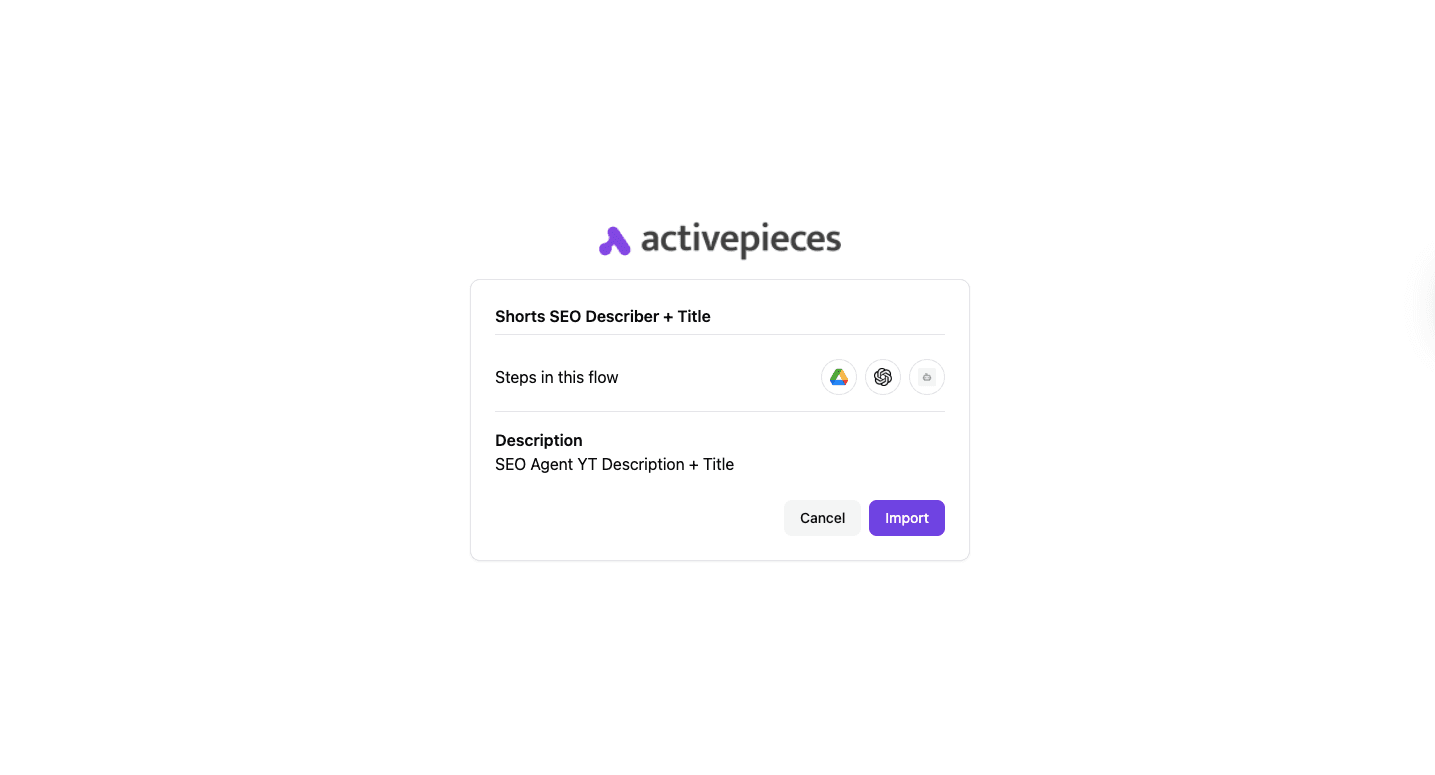
Get the template here: Activepieces shorts SEO describer + title
Content Creation and Drafting
At this stage, your content management workflow moves from planning to production. Every idea, keyword, and brief developed earlier comes together as your team begins writing the actual article or post.
Study the content brief to understand the topic, goals, and format before starting the first draft. For teams using collaborative platforms, Word documents or shared online files make it easy to track feedback and progress.
Once the first version is ready, refine the flow and readability. After reviewing for clarity and SEO, the completed draft is uploaded to the content management system, where it moves to editing and approval.
To make the content creation and drafting phase easier, you can use the “Generate SEO Blogs” workflow from Activepieces. It picks from a list of topics, does SEO research, and generates the blog with an image for you.
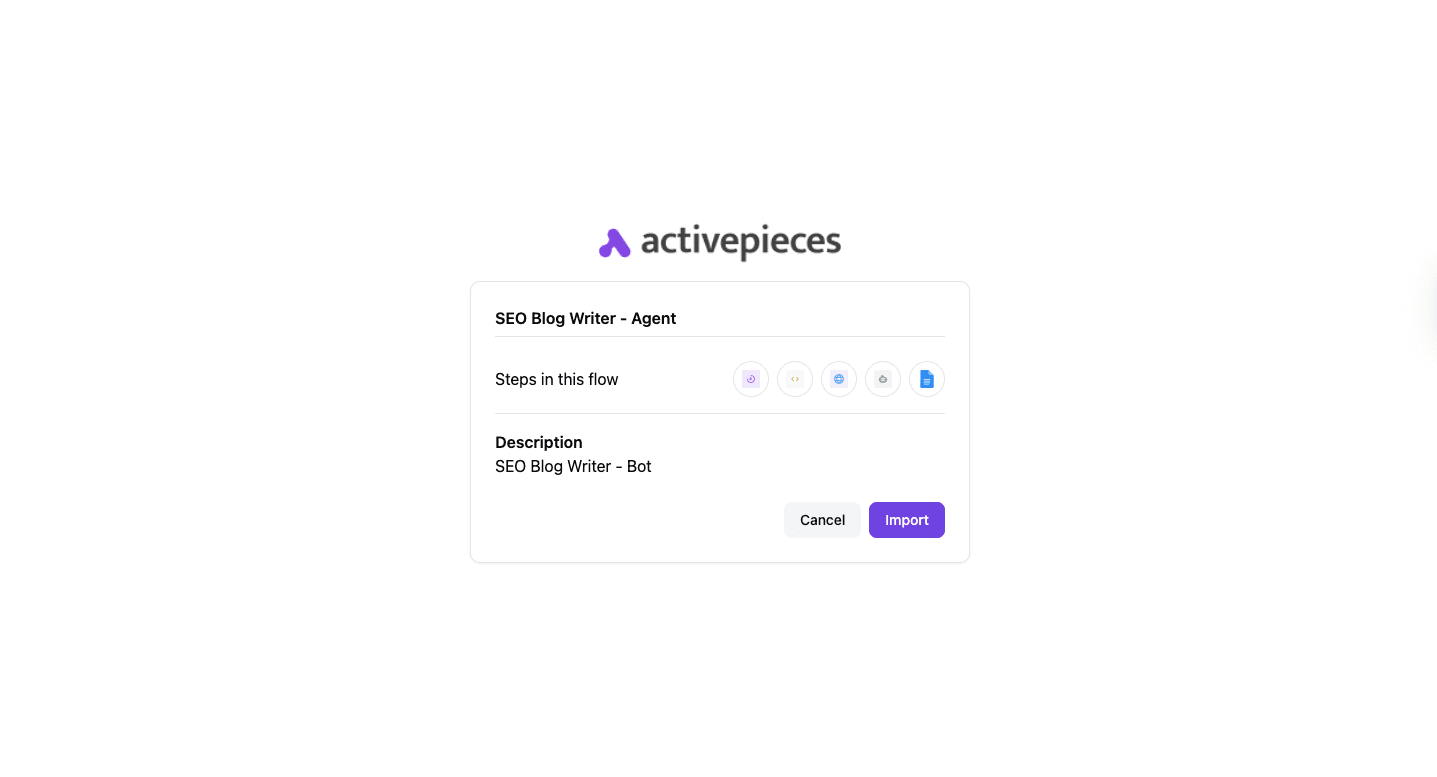
Get the template here: Activepieces SEO blog writer + agent
Editing and Approval Workflow
Every member of the content team should be on the same page about style and standards before moving forward.
An initial review checks grammar, flow, and factual details. Then, editors leave feedback directly in the document or workflow tool to keep comments organized.
Content writers revise based on that input, and the editor conducts a second pass for structure, consistency, and alignment with brand voice. This approval process ensures quality and avoids confusion caused by scattered revisions.
Before publication, final checks confirm that links, visuals, and formatting meet standards. The content then receives sign-off from decision-makers, completing the editing phase.
Uploading and Formatting
After editing and approval, the final version is placed inside the content management system, where layout and optimization come together. Each step matters because it determines how readers and search engines experience the content.
Copy the final text from your shared file and paste it into the CMS. Then:
- Reapply formatting
- Adjust headings
- Upload all visuals
Every image should have clear alt text and accurate filenames that describe what’s shown. Once everything is in place, review links, verify captions, and check that pages display correctly on both desktop and mobile.
Metadata and structured headings strengthen SEO and guide readers naturally through the content. When the layout looks polished, schedule the post for its official release.
Publishing and Distribution
Publishing marks the final stage of your content publishing process, where the finished piece reaches your audience. Before pressing publish, perform a quick quality check. Once complete, your publishing content becomes part of your official content publication calendar.
After it’s live, post on your website and share updates through newsletters and social platforms. Each platform might need a unique tone or image size, so adapt the message where needed.
Distribution doesn’t stop with owned channels. Promote through:
- Guest features
- Social shares
- Backlinks
Paid campaigns such as sponsored posts or pay-per-click (PPC) ads can give a strong push to top-performing content.
3. Choose and Connect Your Tools
You build a smoother content publishing workflow when you pick the right tools and connect them across different platforms so they work as one system.
Content Planning Tools
Content planning tools give you a home for ideas, tasks, and dates before anything reaches your CMS. You treat them as the control panel for each content project. Marketing departments, content managers, and anyone who touches content can see the same plan and stay aligned.
Here are common ways you use planning tools:
- Keep a shared editorial calendar
- Break work into tasks with owners and due dates
- Attach drafts from Google Docs and other files
- Track status from idea to published
Some tools also help with version control. You always know which plan or brief is current, so your content workflow stays clear and your content creation process feels less stressful.
Writing and Collaboration Tools
Writing and collaboration tools handle the part where words take shape. You write, comment, and fix in one shared place instead of trading files through email. That habit keeps the content creation workflow steady and removes the old “which file is final” problem.
Several people can open the same draft, add notes, and suggest changes. Content writers, editors, and project managers see each other’s input in real time, so no one waits for a hidden update.
SEO Tools
SEO tools help you find strong topics, choose keywords, and tune the page so search engines understand it. That guidance turns each piece into a more valuable tool for long-term traffic.
Most teams start with keyword research. You pull ideas from tools that scan results, compare pages, and highlight content gaps. That work helps you shape a brief that gives the writer clear direction and supports better search rankings.
CMS Platforms
CMS platforms hold everything your audience sees. You use them to manage digital content, control layouts, and publish on a schedule that matches your plan.
A solid CMS structure represents a foundation for your content marketing efforts, and it keeps your digital teams aligned around a single source of truth.
Typical CMS work includes:
- Creating new posts and pages
- Setting URLs, tags, and categories
- Adding images, embeds, and forms
- Scheduling the time you publish content
When your CMS connects cleanly to planning and writing tools, the handoff from draft to live page feels simple, even for a busy content management workflow.
Automation Tools
Automation tools link your CMS and other apps so you do less manual work after each publish. You set rules once, and those rules handle routine steps for you.
Many teams now bring in AI-powered content workflow software to connect triggers to actions and keep the whole system moving. For example, you mark a post as published, and your setup can send that link to your social queue, update the task board, and notify the content team in chat.
Automate Routine Steps With Activepieces
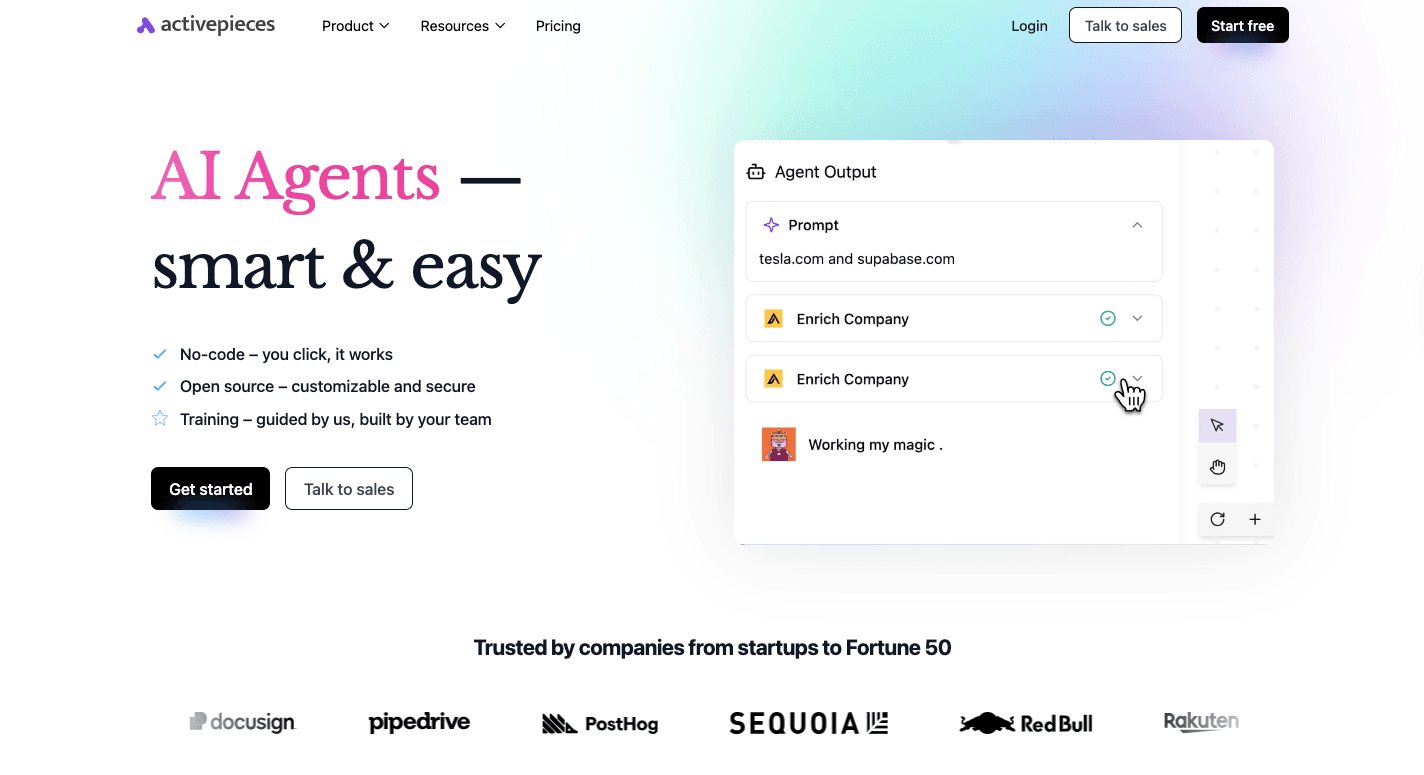
Activepieces is the digital content automation engine behind your well-defined workflow. The system runs on pieces, which are TypeScript integrations. Each piece connects one app to another.
As of today, there are 485 data integrations, and new ones appear every week on the platform. The platform supports AI tools that help generate summaries, schedule social posts, or tag content automatically. It can also pause a task until someone reviews it.
Enterprises can host Activepieces on their own servers to keep data secure. But if you don’t need that level of control, you can use the cloud version, which still provides encryption and private connections.
4. Integrate AI Into the Workflow
Content teams usually spend hours updating metadata, checking analytics, or rewriting content for new formats. Automation through AI takes over those tasks so you focus on creative direction and decision-making.
Activepieces connects AI agents with multiple websites. Right now, there are 485 pre-built integrations existing in Activepieces, covering analytics, marketing, and productivity tools. Developers can even write new integrations in TypeScript and add them to the shared library.
5. Build and Save Your Workflow Template
Turning your process into a reusable template helps you stay consistent and shortens production time for every new piece of content. Once you’ve mapped and refined your workflow, save it as a standard that everyone can follow.
Make simple checklists for recurring actions, such as “run keyword research,” “review SEO title,” or “update featured image.” Each step should have a sign-off rule that defines when it’s ready to move forward.
After identifying repeatable tasks, choose where the template will live. Once the framework is ready, test it with a few pieces of content.
Ask your content team for feedback, refine weak points, and document the final version in a shared space. Review results using analytics tools to see if the workflow improves turnaround time and consistency.
Automating Your Blog Writing With Activepieces
Manual content production drains your time. You can set up a system that writes and posts for you while staying accurate and consistent.
Set Up the Framework
Start with a Google Sheet. Add two columns: one for content ideas and another for writing instructions.
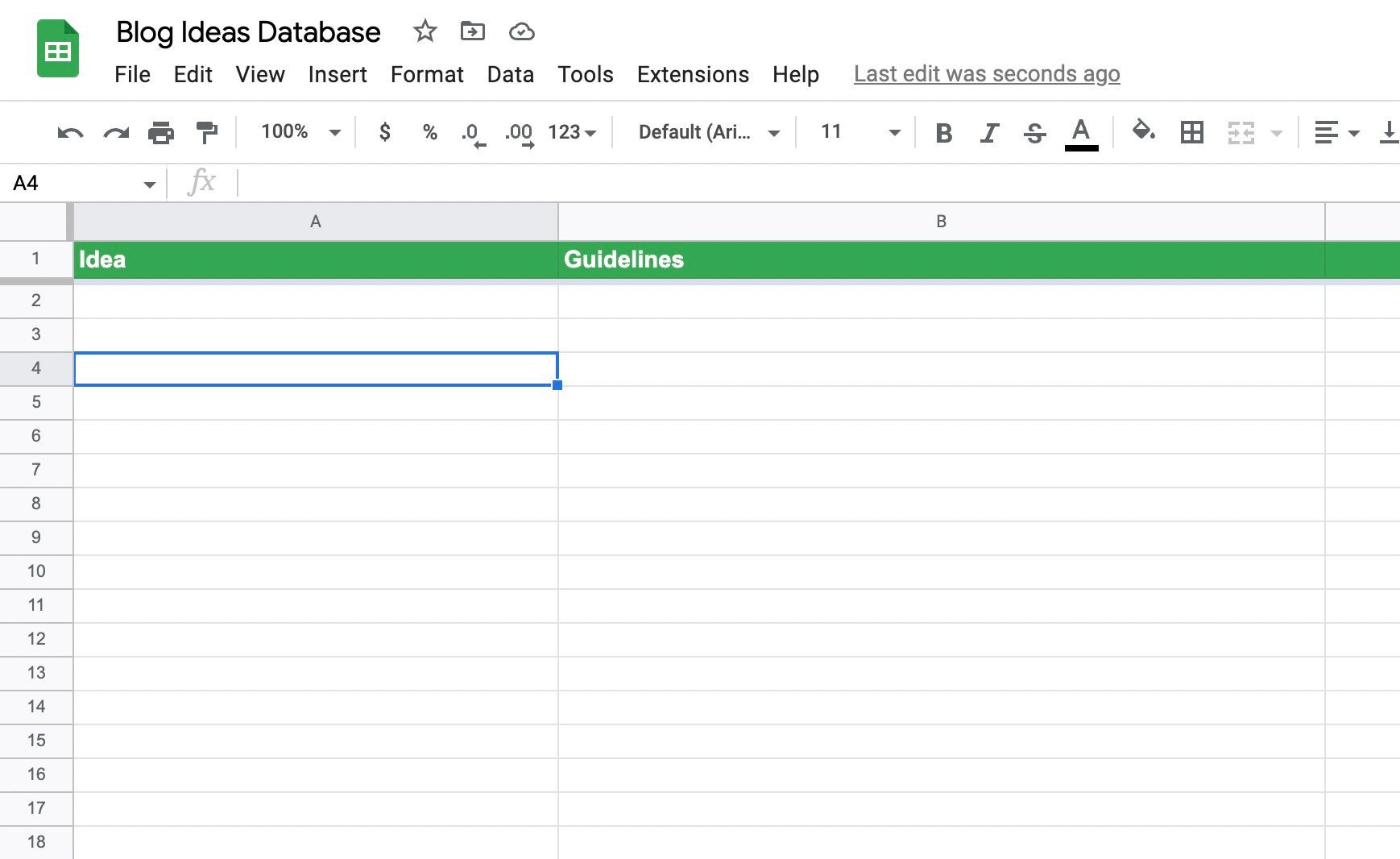
Each new entry will launch the automation. Connect the sheet to Activepieces and create a flow called “AI Blog Writer.” Select “New Row” as the trigger. Each time you add a new idea, the automation begins.
Generate the Post With AI
Connect OpenAI in Activepieces. Add the following steps:
- The prompt for the title pulls the idea from the first column in your sheet.
- The prompt for the content uses the title and the writing notes from the second column.
Once set up, every new idea produces a complete draft automatically.
Post to WordPress and Notify the Team
To connect your WordPress site to Activepieces, you need to install this basic authentication plugin. Activepieces sends the generated content directly to your site as a draft. The title and body fill the proper fields automatically.
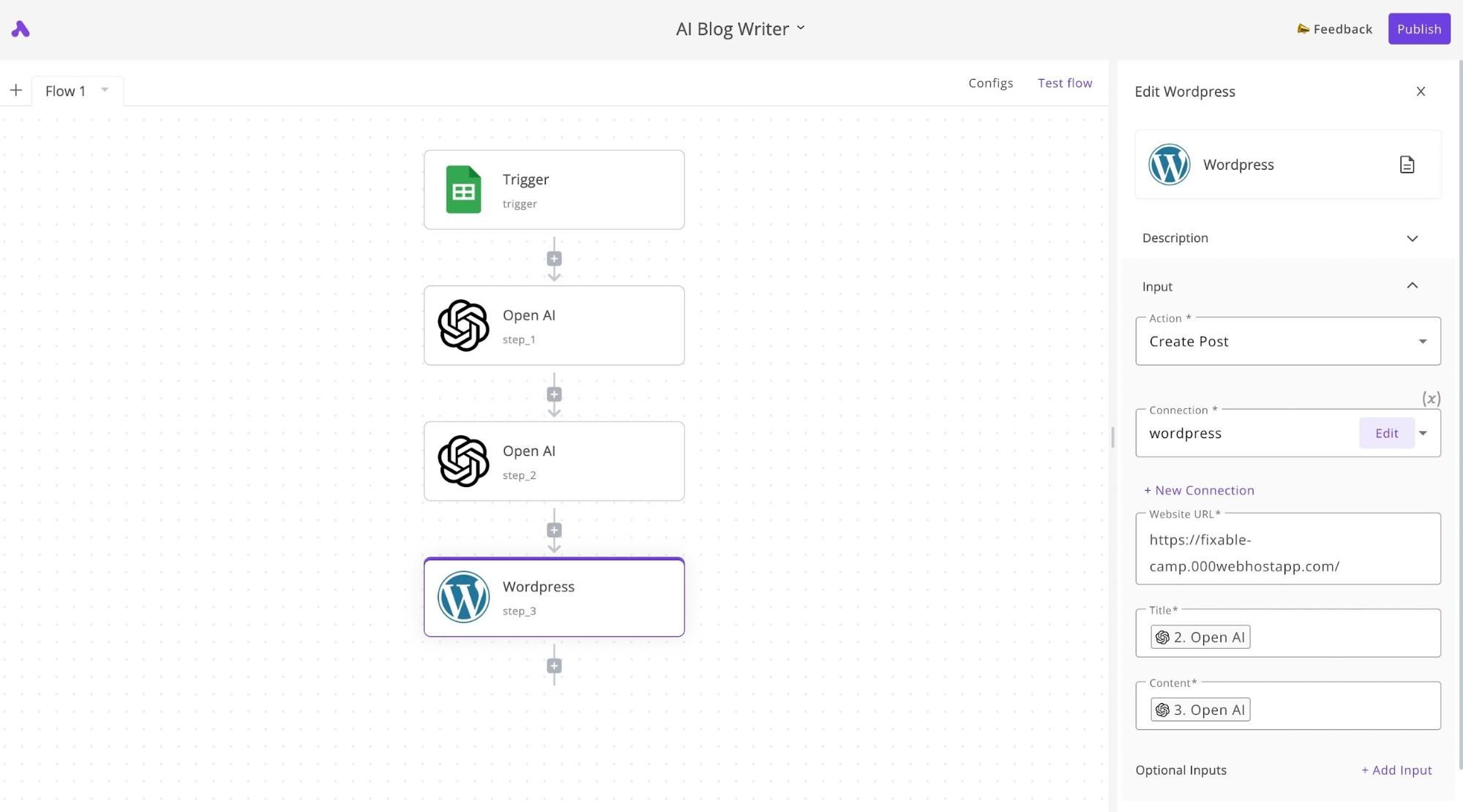
Add another step that sends an email through Gmail to alert your team when a new post is ready for review. The message should include the post link so reviewers can open it immediately.
Test and Run the Automation
Add three or four ideas to the sheet to test the setup. Watch each move from idea to published draft within minutes. Activepieces checks the sheet roughly every five minutes, so new ideas don’t sit idle.
Once the test runs smoothly, turn on the flow permanently. From then on, you’ll have a continuous loop producing blog posts in the background without constant supervision.
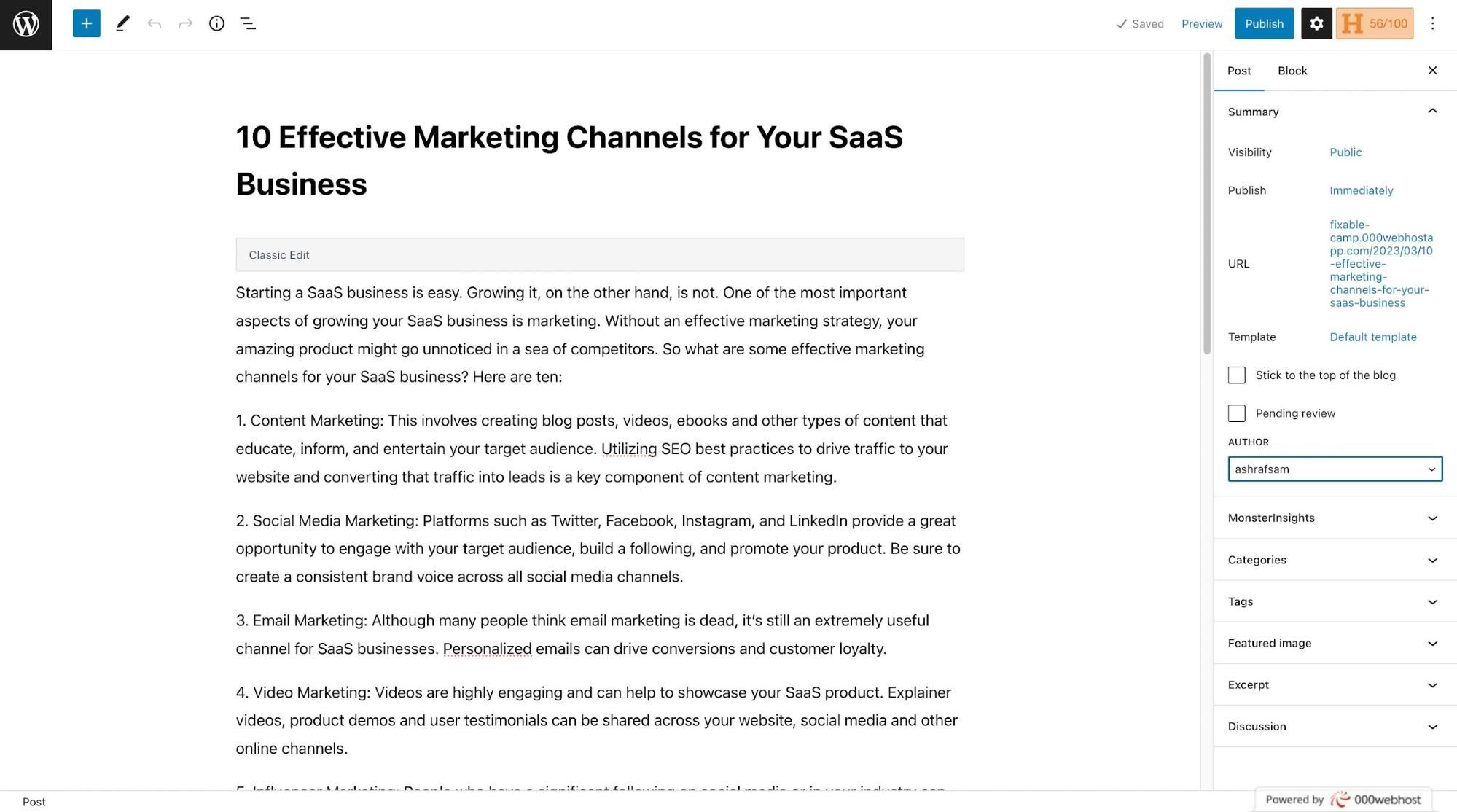
Launch a High-Performance Content Creation Workflow With Activepieces
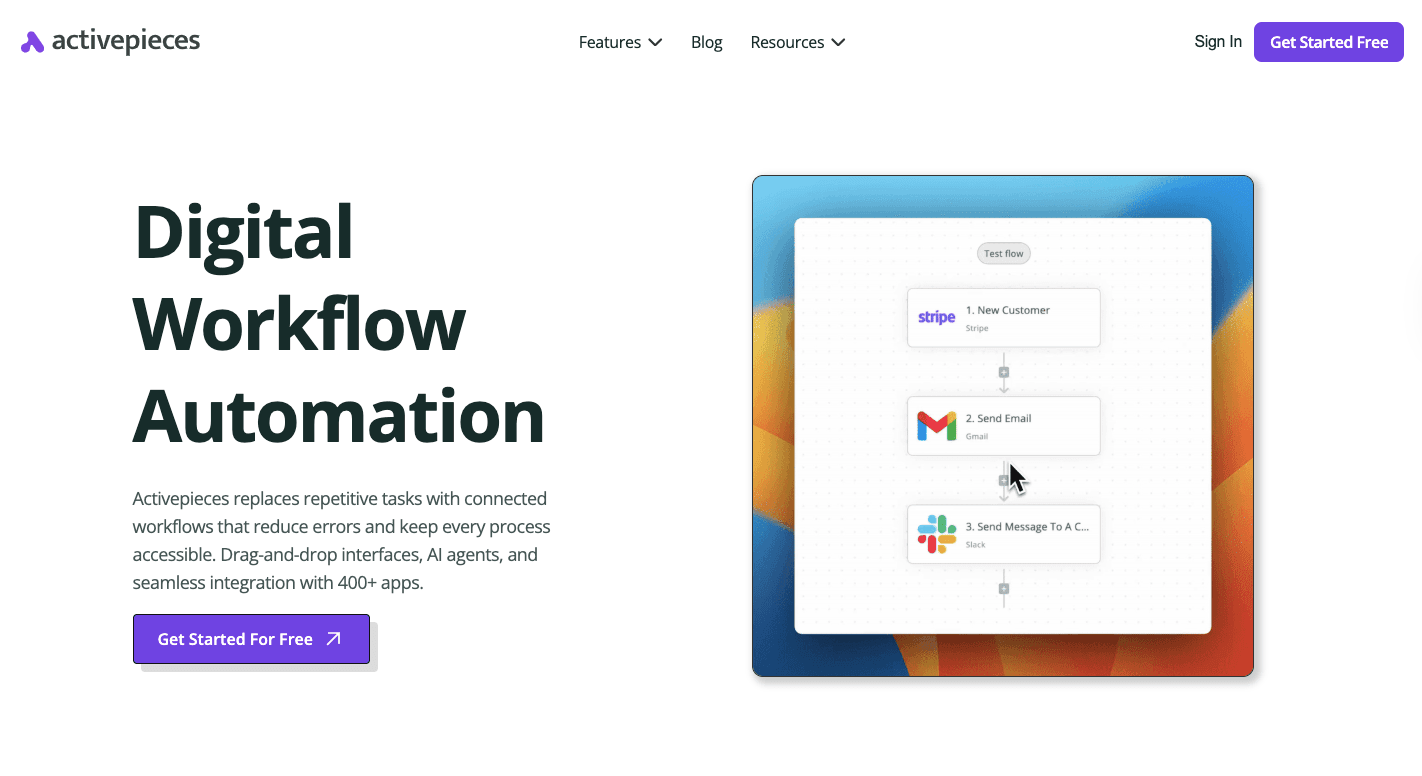
Slow workflows drain productivity and stall growth. Activepieces is a digital workflow automation platform that removes those delays by connecting every stage of the content workflow into a single platform.
Tasks that once took days can finish in hours. The platform works for everyone: developers can customize pieces in TypeScript, while content marketers can use the no-code builder to design flows in minutes.
Automation covers everything from AI-generated summaries and SEO optimization to cross-posting updates on social media. Built-in human input triggers let your team members approve or pause steps when needed.
On the other hand, companies can self-host, maintain full data control, and even create custom integrations when needed. By replacing manual steps with automated flows, you cut routine publishing time and focus more on strategy and creativity.
For content-driven businesses, Activepieces transforms slow pipelines into automated workflows that deliver consistent quality every time.
Boost your productivity by trying Activepieces for free today!
FAQs About Content Publishing Workflow
What is the content workflow process?
A content workflow process is the step-by-step path that guides the entire content process from idea to publication. It covers the creation phase, editing, review, and final release, so content development stays organized.
In addition, it removes inconsistent messaging, prevents content gaps, and supports content consistency across channels. Each step shows who acts next, where the content appears, and how the planning process moves forward until the content stands ready for release.
What are the seven steps of content creation?
The seven steps of content creation usually include planning, research, writing, editing, optimization, approval, and publishing. Each step builds on the previous one, so the creation phase moves in order, and the final piece supports the audience you want to reach.
What are publishing workflows?
Publishing workflows are structured paths that move approved drafts into their final format and prepare them for release. These workflows handle formatting, layout, metadata, scheduling, and checks that confirm the piece fits the channel where the content appears.
What are the four types of workflows?
The four common types of workflows are task-based, status-based, sequential, and automated.


